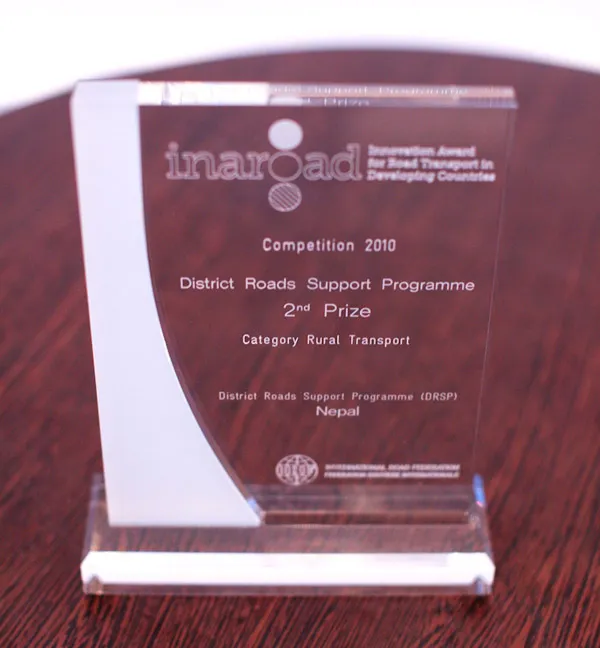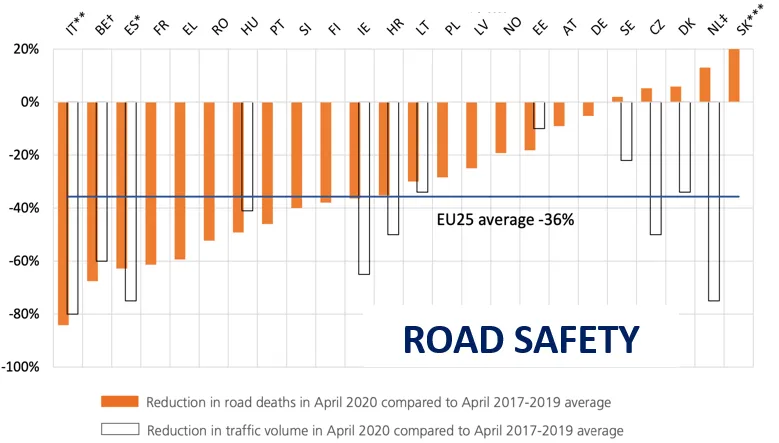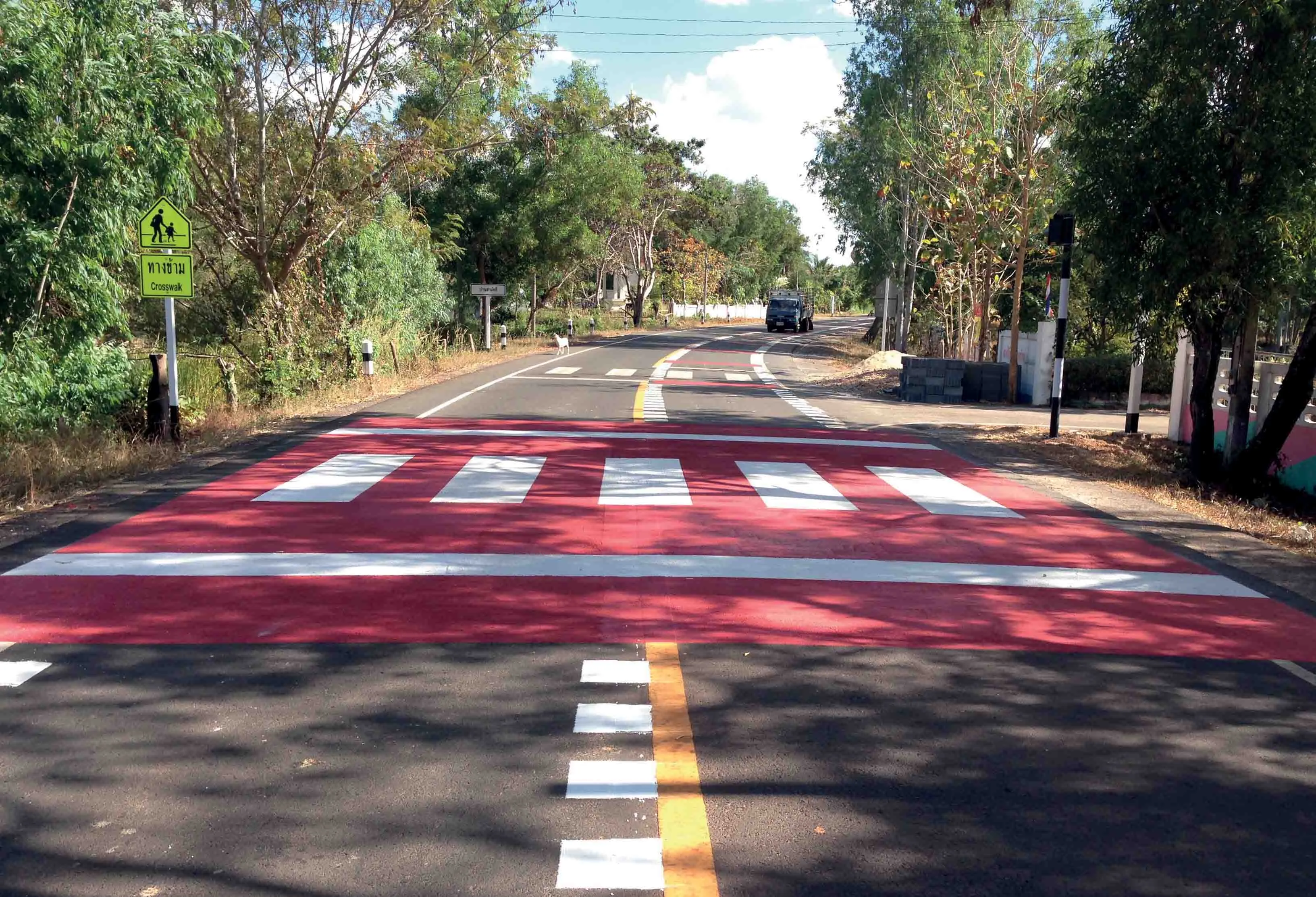
You grow potatoes, maize and barley on your meagre share of land.
The harvest from your land covers your family's basic needs for four months in a year, but you need extra food to sustain them during the hard times, and you are desperate for cash income.
The nearest road, however, is a three-hour walk over difficult terrain. The health post is some distance away, as is the nearest primary school for your children.
Such scenarios are all too familiar throughout the developing world and illustrate the importance of roads in terms of providing access for isolated communities, as well as the vital contribution the road sector can play towards the realisation of the UN Millennium Development Goals.
A road near a farmer's home will significantly increase his access to resources and opportunities. A single public transport vehicle plying the road could shorten travel time for so many people in his community: schools will be easier to travel to; more public utilities and services will be accessible; ambulance services will finally be able to reach patients within the community, and the resultant decreases in the cost of freight will gradually lower price levels in local shops.
Making such progress reality has been the cornerstone of the work of the Nepalese
Project background
The hilly, landlocked Nepalese terrain, although stunning to the eye, has historically limited the access of local rural populations to essential services such as schools, health centres and markets, thereby constraining economic development and social inclusion.Understanding the grave need for roads in these areas of Nepal, the DRSP was initiated in 1999 by the Swiss Agency for Development and Cooperation (SDC).
Although Nepal is ranked among the poorest countries of the world, it has vast untapped development potential. There is tremendous scope for increasing agricultural production, developing hydropower and improving health and education. Key to this is ensuring that the rural population, most of which is dependent on subsistence agriculture or earnings from migrant work in Kathmandu, India or the Middle East, is provided with access to more secure income, better health and education facilities, and new markets to trade local goods and commodities.
In this perspective, it is simple to understand how a lack of serviceable roads can hinder economic and social development, especially in remote areas where some villages are as far as a 13-day walk from the nearest road.
In addition to the physical challenges, there is a scarcity of capital resources, as well as the ingrained problems of poor governance in Nepal. Yet, the country does have the distinct advantage of being blessed with a very honest and hard-working rural population.
It has been in no small measure due to the enthusiasm and dynamism of the communities along each road corridor that DRSP has been able to grow and contribute to the overall development of each district.
Originally conceived to work in just three districts, the success of the initiative quickly saw it expand into six.
There was little experience of planned rural road construction in Nepal in 1999, so DRSP quickly adopted a policy of 'learning by doing'. This involved immediately engaging with the districts by directly constructing or maintaining roads.
This process inevitably involved making some mistakes but valuable experience was gained by learning from those mistakes, and remedying them through ongoing work to improve programmes and achieve evergreater benefits.
As the programme advanced, it quickly became evident that roads were in high demand in districts across the country.
However, the temptation to rush headlong into simply building new roads had to be tempered by the parallel need to maintain the quality and integrity of existing roads, so that they would be usable in a sustainable manner by motor vehicles. Thus, from year one of the programme, a strategy was formulated which involved rigorous respect of government procedures and adoption of a labour-based, environmentally friendly and participatory (LEP) approach.
Such an approach, which further ensured due transparency, good governance and empowerment components, was in radical contrast to the traditional way of constructing rural roads in Nepal, which usually involved very little engineering or planning, and use of inappropriate heavy machinery, invariably accompanied by indiscriminate decisions on alignment and virtually no consultation with the communities affected.
Reaching 'beyond the road'
Before DRSP, the community development, environmental and land compensation or settlement dimensions were seldom considered in the context of national rural road projects.DRSP has comprehensively changed this attitude. Following the approach advocated by the Government of Nepal, a system of engaging and mobilising local groups to work on the road has been established.
Work is implemented by local district bodies and is financed by a district road fund specifically set up for DRSP. Specialised advisors, technicians, engineers and social mobilisers on the DRSP team intervene to strengthen the capacity of local and district bodies to plan, manage and implement road works. Priority is given to recruiting the workforce from the most disadvantaged groups and providing on-the-job training, with sections of road requiring additional skills being delegated to local contractors.
Workers receive timely payment, within 30 days of work completion, and benefit from accident insurance. All workers are paid equal wages for equal work, and there is special focus on workers' safety and welfare issues, including through the provision of first aid kits, helmets and other safety equipment, as well as awareness information regarding workers rights. A mutual emergency fund, to which each member contributes a rupee a day, assists in meeting immediate expenditure for such events as small injuries.
While working on the road brings short-term benefits to such communities, as a result of the wages they are paid, DRSP has advocated from the outset that further measures are necessary to ensure that people continue to derive benefits in a longerterm perspective. Accordingly, DRSP places considerable emphasis on vesting beneficiaries with new life skills to better equip them to continue providing for their families long after the road works are complete. These efforts include the provision of savings and credit facilities as well as vocational skills training.
Particular attention has also been given to strategies that contribute to improving literacy and basic health and hygiene, as well as raising HIV/AIDS awareness.
DRSP was also conscious that road works in the fragile geography of the Himalayas can cause major environmental destruction if not managed properly.
Comprehensive Initial Environmental Examinations (IEEs) are, therefore, carried out with respect to each road corridor, and while regrettably the principle is still some way from being wholly institutionalised within local authorities, ongoing efforts are being made to ensure that appropriate mitigation measures are initiated as and where necessary, and duly monitored in accordance with Government of Nepal regulations.
Bioengineering constitutes just one example of an effective mitigation measure used widely by the initiative - one that, besides stabilising fragile slopes, brings additional social benefits, including employment for locals.
DRSP has been the sub-sector leader in community development for all rural roads in the country and has set the standard for other projects to follow. In doing this, it has not only built appropriate infrastructure, but has left the footprints of its methodology for others to follow. The experience will be fully documented and disseminated by the end of the fourth and final phase of the programme in 2013.
Over its short span, the programme has provided all-weather access to some 500km of roads suitable for motor vehicles, generating 2.5 million person days (including 37% women) of employment in the process. The number of people living within 30 minutes walking distance of the nearest road has increased by more than 50% in the districts where DRSP has been operating.
The benefits of the programme cannot, however, be counted merely in dollars or kilometres of road. The rate-of-return calculations do not show the full picture. More tellingly, the success of the programme can be felt by the smiles of the local people, by the increased frequency with which they travel to the local health centre or by the growing number of school children who attend the district schools.
Talking to the local people it becomes obvious how their lives have been transformed.









